 NIES Large Lidar
NIES Large Lidar
 NIES Ozone Lidar
NIES Ozone Lidar
 RIS Home Page
RIS Home Page
 List of publications
List of publications
[<][>]
NIES Large Lidar
The NIES Large Lidar was a Mie scattering lidar with scanning capability. The lidar employs a Q-switched Nd:YAG laser and a receiver telescope with a diameter of 1.5 m.
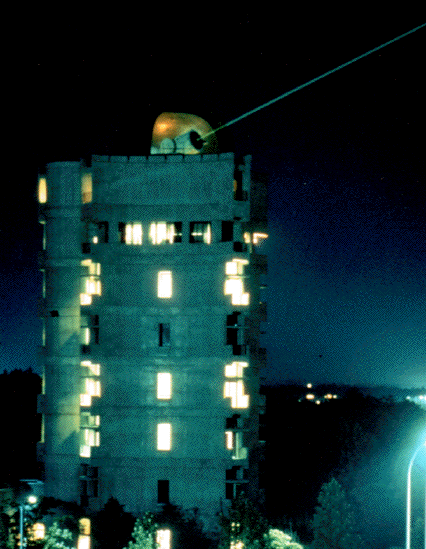
NIES Large Lidar
The NIES large lidar was constructed in 1979. It was used in researches on atmospheric boundary layer structure related to air pollution phenomena.
The following figure shows convective cell structure in the planetary boundary layer revealed by the vertical and horizontal scan measurements with NIES large lidar.
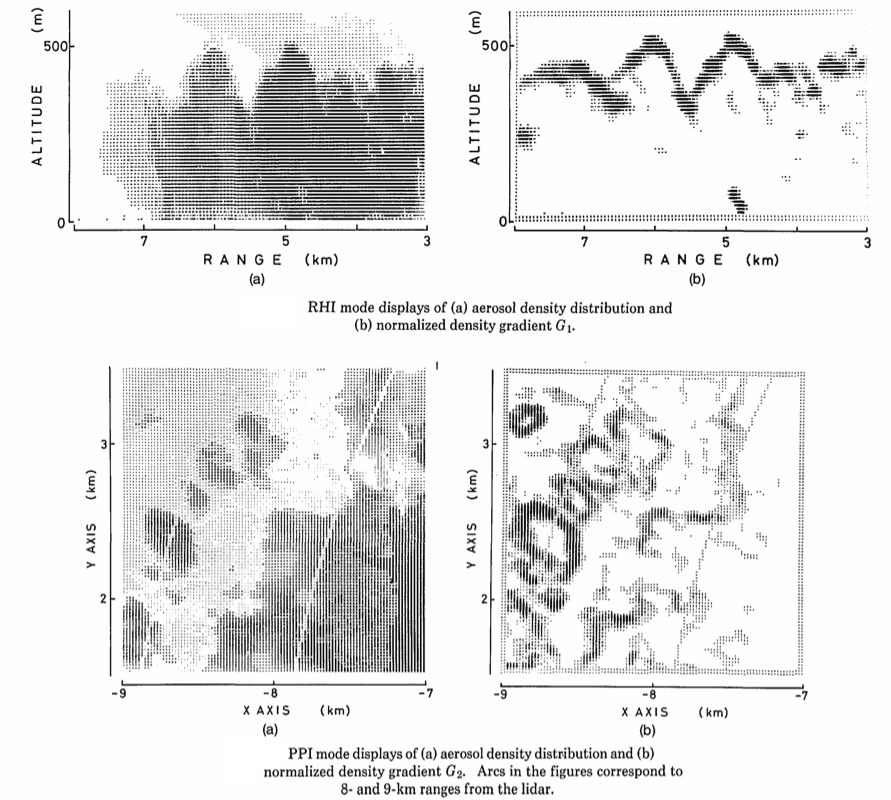
Convective cell structure measured with NIES Large Lidar
(Y. Sasano, H. Shimizu, N. Takeuchi, Appl. Opt. 21, 3166-3169, 1982.)
The figure below shows an example of vertical scan measurement with the lidar. Structure of a sea-breeze front is clearly seen in the figure using aerosol as a tracer.
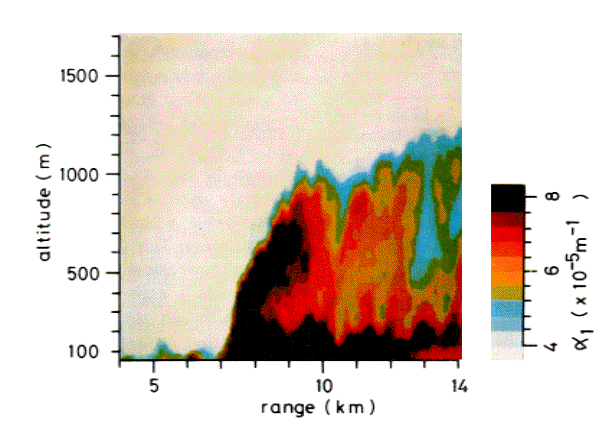
Structure of a sea-breeze front measured with NIES Large Lidar
(H. Nakane, Y. Sasano, J. Meteorol. Soc. Jpn. 787-792, 1986.)
Movement of the sea-breeze front obtained from the consecutive horizontal scan measurements is indicated in the next figure.
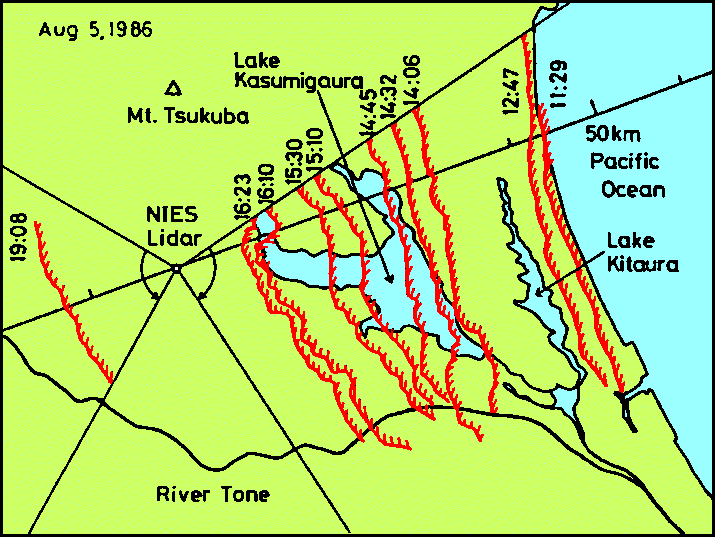
Movement of the sea-breeze front
The NIES Large Lidar was also used in the researches related to the global atmospheric environment. Vertical profiles of troposheric and atratospheric aerosols were observed. The following figure shows averaged seasonal aerosol extinction coefficient profiles derived from the vertical scan measurements with the NIES large lidar.

Seasonal aerosol extinction coefficient profiles.
(Y. Sasano, Appl. Opt. 35 (24) 4941-4952, 1996.)
The figure below shows variation of stratospheric aerosols over Tsukuba, Japan after eruption of Mt. Pinatubo in the Philippines.
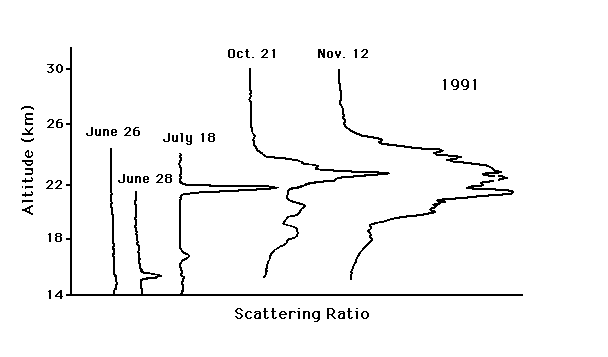
Stratospheric aerosols over Tsukuba after Pinatubo eruption.
(Hayashida, S., Sasano, Y., Geophys. Res. Lett., 20 (7) 575-578, 1993.)
NIES Large Lidar Photos (2.51MB)
[<][>]
Ozone Lidar
The NIES Ozone Lidar is a differential absorption lidar using a XeCl excimer laser and a third-harmonic Nd:YAG laser. It was constructed in 1988. (Sugimoto, N, Sasano, Y., Hayashida-Amano, S., Nakane, H., Matsui, I., Shimizu, H., Takeuchi, N., and Akimoto, H., 14th International Laser Radar Conference, Abstract 187-189, Innichen-San Candido, Italy, June 1988.)
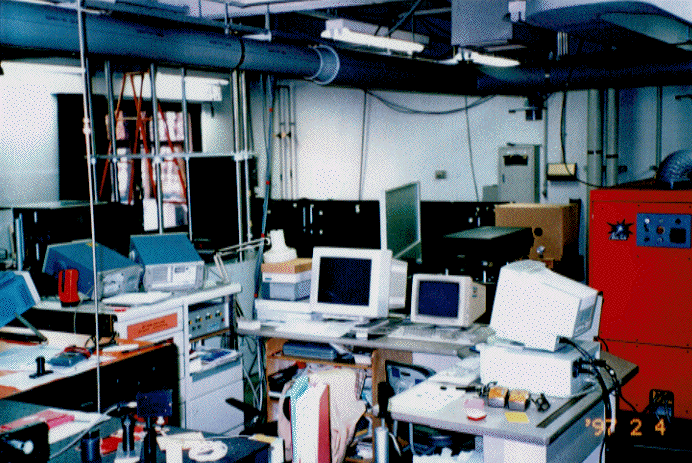
NIES Ozone Lidar
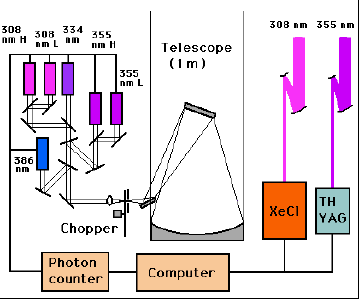
Schematic diagram of the NIES Ozone Lidar
Stratospheric ozone has been observed with the lidar system. The figure shows the variation of ozone over Tsukuba. Variation of ozone (seasonal variation, quasi-biennial oscillation (QBO), and the variation due to the 11-year solar cycle) and the trend were analyzed.
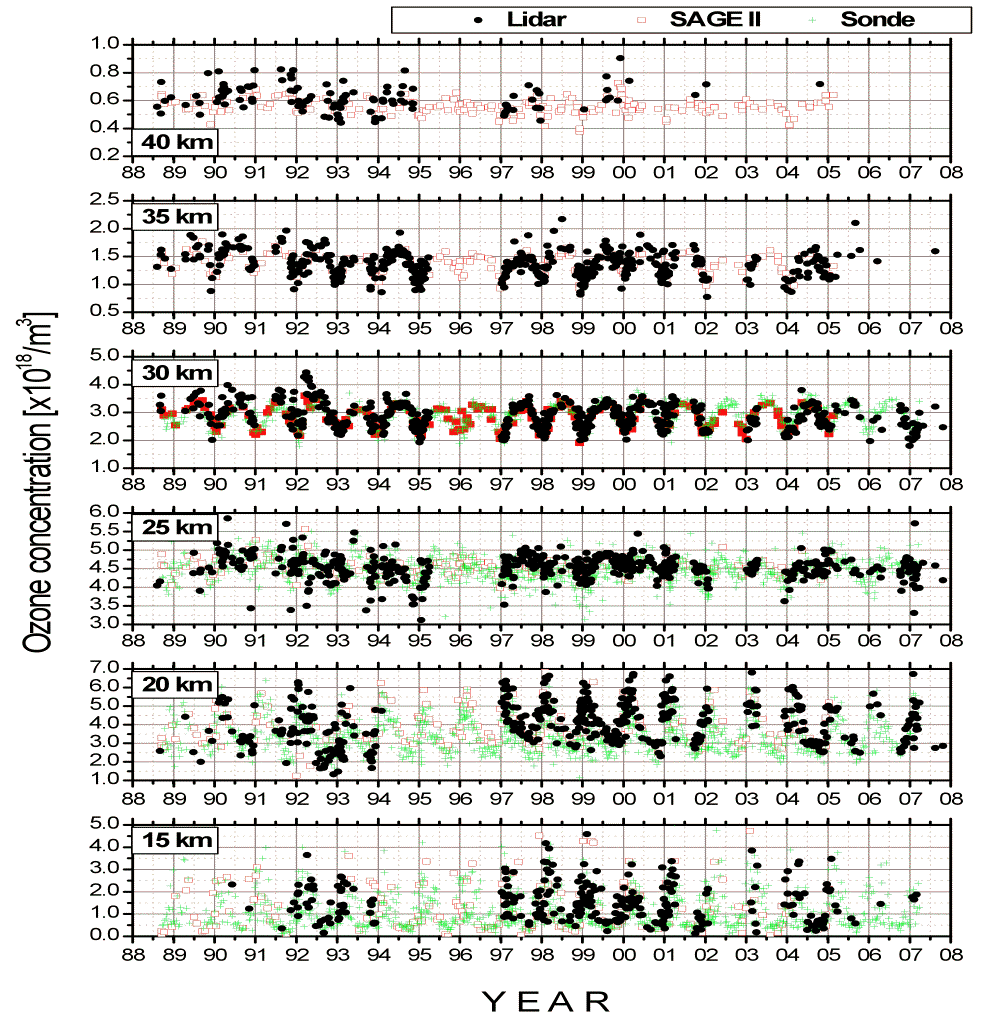
Variation of ozone over Tsukuba
(Park, C-B., H. Nakane, N. Sugimoto, I. Matsui, Y. Sasano, Y. Fujinuma, I. Ikeuchi, J. Kurokawa, and N. Furuhashi, Appl. Opt. Vol. 45, 3561-3576, 2006. /
Tatarov, B., Nakane, H., Park, Ch. B., Sugimoto, N., Matsui, I., International Journal of Remote Sensing 30, 3951-3960, 2009.)
NIES ozone lidar photos (3.4MB)

Quicktime Movie introducing the NIES ozone lidar (1988, N. Sugimoto)
(4min20sec, 2MB, narration in Japanes.)
[to HOME]










